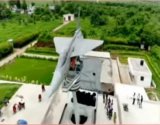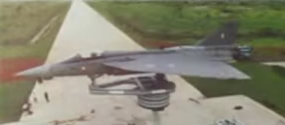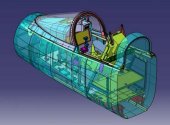is it? so is Mig-21 an RCS optimized fighter too? Because it shares small size, delta wing and vertical stabilizer with the Tejas, with the addition of RCS reducing features such as no spacing between fuselage and intake, and an intake with no line of sight to turbine blades, that the Tejas does not have.Small size is still highly relevant when other measures are either equally taken, not taken, or the aspect isn't exactly helpful to the matter(side, for example).
You are using an out of date browser. It may not display this or other websites correctly.
You should upgrade or use an alternative browser.
You should upgrade or use an alternative browser.
Indian Military News, Reports, Data, etc.
- Thread starter bd popeye
- Start date
Mig-21 wasn't RCS optimized at all - apples to apples(it was designed a whole decade before the Ufimtsev book was first published).is it? so is Mig-21 an RCS optimized fighter too? Because it shares small size, delta wing and vertical stabilizer with the Tejas, with the addition of RCS reducing features such as no spacing between fuselage and intake, and an intake with no line of sight to turbine blades, that the Tejas does not have.
And yet, it was notorious for having uncomfortably low frontal RCS to deal with as late as the 2000s*, giving the type its remarkable persistence in combat roles.
Tejas was designed in 1990s - when digital design, computer RCS calculation and digital processing of echo chamber results into a model were already widespread public/professional knowledge.
Thus, with equal treatment of the more obvious hot spots - Tejas size still remains the relative factor in its favour(compared to non-stealth aircraft, but from side/top-down profiles and aspects - even overall).
*by the way, adds an interesting perspective on reasons why BVR failed in Vietnam on so many levels (late detection/identification, low Pk, need for visual FoF, and so on).
is it? so is Mig-21 an RCS optimized fighter too? Because it shares small size, delta wing and vertical stabilizer with the Tejas, with the addition of RCS reducing features such as no spacing between fuselage and intake, and an intake with no line of sight to turbine blades, that the Tejas does not have.
There's a difference between an "RCS optimized fighter" and a "fighter that due to a combination of reasons happens to have low RCS".
Traditionally, when all else were held equal, yes it is the case that fighters/aircraft of a smaller physical size tended to have a smaller RCS than a fighter/aircraft of a larger physical size.
In the case of Tejas, the claim that "Tejas has smallest RCS among all 4th Gen fighter jets" is unsubstantiated, but it is reasonable to expect that in a clean configuration Tejas likely has a relatively small RCS -- but that would be expected for any fighter of its small physical size as well.
What Tejas does not have, is extensive or significant RCS reduction shaping measures itself, and calling Tejas "RCS optimized" is probably a bit of a stretch at minimum.
just because they had the knowledge does not mean they can machine the fuselage to the tolerances, as shown by the gap between intakes and fuselage, the protruding pitot tube/refueling probe/antenna, the uneven surface under the wing, the gap between canopy and fuselage on the left side, the curved surfaces used which guarantee some direct radar return and the point scattering centers of the non-flush fasteners used.Mig-21 wasn't RCS optimized at all - apples to apples(it was designed a whole decade before the Ufimtsev book was first published).
And yet, it was notorious for having uncomfortably low frontal RCS to deal with as late as the 2000s*, giving the type its remarkable persistence in combat roles.
Tejas was designed in 1990s - when digital design, computer RCS calculation and digital processing of echo chamber results into a model were already widespread public/professional knowledge.
Thus, with equal treatment of the more obvious hot spots - Tejas size still remains the relative factor in its favour(compared to non-stealth aircraft, but from side/top-down profiles and aspects - even overall).
*by the way, adds an interesting perspective on reasons why BVR failed in Vietnam on so many levels (late detection/identification, low Pk, need for visual FoF, and so on).
Indian Military News, Reports, Data, etc.
Vertical stabilizer isn't that important for direct frontal RCS. Overall claim that Tejas may be quite sneaky for a non-stealth a/c may very well be close to truth - it's really very small, and it was designed after RCS design long stopped being a special knowledge for premier a/c design...
www.sinodefenceforum.com
That's normal for that (sub)generation of aircraft - all of them use the same hotspot treatment/target value approach.just because they had the knowledge does not mean they can machine the fuselage to the tolerances, as shown by the gap between intakes and fuselage, the protruding pitot tube/refueling probe/antenna, the uneven surface under the wing, the gap between canopy and fuselage on the left side, the curved surfaces used which guarantee some direct radar return and the point scattering centers of the non-flush fasteners used.
You can see more or less the same design approaches and standards on Jas-39abcd/Eurofighter/Rafale/J-10A.
And among those I don't see big problem in Tejas being the (relatively) sneakiest. It may be.
Various RCS and drag penalties of all magnitudes such as those from protrusions for air data sensors such as vane sensors, pitot tubes etc are well acknowledged and are supposed to be mitigated with a FADS (Flush Air Data Sensor) arrangement using a modified centre-line EFT such that the sensors are flushed along the fuselage. Applications could include upcoming Tejas iterations, AMCA and TEDBF 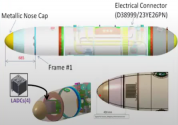
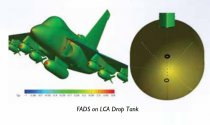


Wings blend with fuselage in case of Tejas so is not the case with Mig21 or for that matter any 4th gen fighter jet (except few)is it? so is Mig-21 an RCS optimized fighter too? Because it shares small size, delta wing and vertical stabilizer with the Tejas, with the addition of RCS reducing features such as no spacing between fuselage and intake, and an intake with no line of sight to turbine blades, that the Tejas does not have.
Look at these pictures
Tejas looks so smooth with wings blending with the body
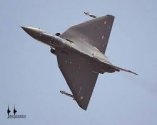
Now look at this picture of Mig21 you can clearly see the difference Wings and body are separate
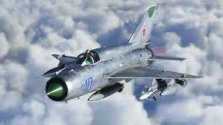
The RCS of Tejas has been brought down significantly by modifying shape aspects within the limitations set by aerodynamics. Tejas got one of the best RCS value in the entire 4th generation fighters. Publically available figure is 0.5m2.There's a difference between an "RCS optimized fighter" and a "fighter that due to a combination of reasons happens to have low RCS".
Traditionally, when all else were held equal, yes it is the case that fighters/aircraft of a smaller physical size tended to have a smaller RCS than a fighter/aircraft of a larger physical size.
In the case of Tejas, the claim that "Tejas has smallest RCS among all 4th Gen fighter jets" is unsubstantiated, but it is reasonable to expect that in a clean configuration Tejas likely has a relatively small RCS -- but that would be expected for any fighter of its small physical size as well.
What Tejas does not have, is extensive or significant RCS reduction shaping measures itself, and calling Tejas "RCS optimized" is probably a bit of a stretch at minimum.
The smooth upper wing body blending of Tejas gives it enough Stealth to avoid early detection. This kind of upper body blending is only being seen in later generation fighters from sukhoi, rafale, euro fighter typhoon, F-22, PAKFA, and J-20. This high wing body blending is the hall mark of even the fifth gen fighters, reducing the corner reflections from the awacs radars searching from above resulting in lower RCS with missiles and external sores hidden under the wing.
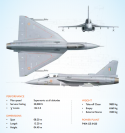
Tejas design incorporates a high wing body fuselage blending implemented from behind, resulting in smooth bouncing off of searching radar waves from behind whether they are x band or l band or aesa or mechanical it does not matter. If Tejas flies low hiding its stores no airborne radar will detect it from beyond 120 kms due to 0.3 sq meter rcs

